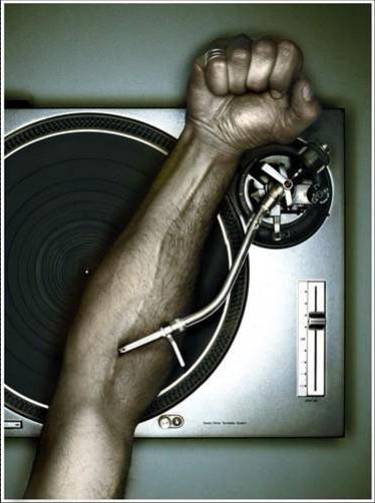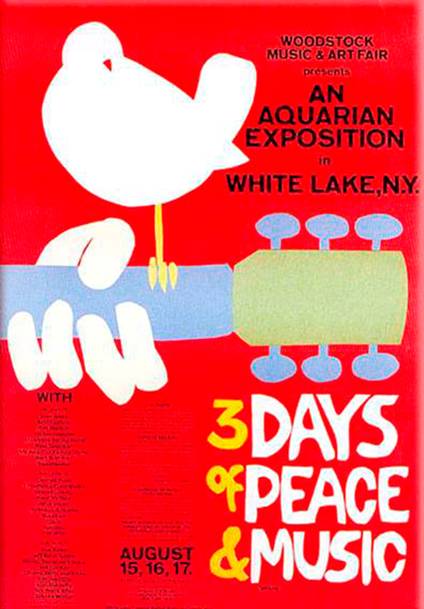
But in the long run these drugs are probably gonna catch up sooner or later
But fuck it I’m on one, so let’s enjoy,
let that X destroy your spinal chord, so it’s not a straight line no more
So we walk around lookin like some wind-up dolls,
shit stickin out of our backs like a dinosaur,
Shit, six hit’s won’t even get me high no more,
so bye for now, I’m gonna try to find some more
– Eminem, Drug Ballad
Drug strewn lyrics and references are found in much of today’s popular music. What effect do these words have on the average listener? Would you let your 10 year old listen to this? Why not… they’re just lyrics right?
School House Rock: Monkey Hear, Monkey Do?
John Markert: Two Schools of Thought
1) Reflection Theory : “Music is popular because it reflects the values and beliefs of those who consume it.” Proponents of Reflection Theory examine cultural forms such as music lyrics to gain insight into social beliefs. Here music is used to probe the connection between society and culture. Supporters of this intellectual tradition see the audience consuming with a critical eye, selecting songs because the theme relate to them and their world.

2) Arnoldian Theory : “Music is didactic and acts as a socializing agent by teaching behavior.” The concern by those at the other end of the intellectual tradition is that song lyrics may teach inappropriate social behavior. Mathew Arnold laid the foundation for this perspective in the last century, and his initial assessment continues to remain popular.
This is where the real debate can begin. Are the music and lyrics of songs with drug, alcohol, sex, and violence references putting adolescents at a greater risk of alcohol and drug use? Or is it simply the culture that these songs and music are created and engulfed in?
Pros and Cons of the Two Schools
One can make a case for both opposing ideologies. On the one hand, it is easy to see how the music and general lyrics can influence adolescents into using drugs and alcohol. For example, when browsing for songs that contain any type of alcohol or drug reference it is not hard to find hundreds of songs that contain one if not both. “White Lines”, “Fight for Your Right to Light the Bong,” and “Crack Monster” are just a few of the songs that diminish the dangers and actually commemorate the use of drugs and alcohol.
Yet many artists use drugs in their music videos and on stage at their concerts like there is nothing wrong with the illegal use of substances (Blueberry Yum Yum – Ludacris) – just a reflection of the way these artists live. Even so, it remains relatively easy to see how adolescents can be influenced by both the music and by the artists’ lives.
Just a Hypothetical Lifestyle?
So is this music showing off an attractive lifestyle, or is it simply showing an artist’s habits? Let’s actually look at dollars and cents. In today’s competitive music market, just as sex sells in visual media, explicit music sells platinum records.
For example, the Any Town, USA record store is generally void of “cleaned up” versions of albums that have explicit lyrical content warnings. This is due in part to the low appeal on part of the consumer. No store will market it if it is not going to create revenue.

Case in point: Amazon.com is one of the few places to buy the clean version of Lil Wayne’s Tha Carter III, and it ranks #60,536 in Amazon record sales at the moment. The unedited version sells of Tha Carter III currently ranks #554. Regardless of factual or fictional drug within an artists’ lyrics, the sales show that the gritty, unclean lyrics are preferable to customers than the watered down counterpart.
Yet drugs have always been there, in one form or another, during the cultural emergence of popular music. Even before this music can be packaged and sold on sites like Amazon, specific types of drug use have often involved in the emergence of new genres of music.
From the hippies of the 60’s (think Jimi Hendrix at Woodstock) to the ravers in the 90’s, drugs have followed generations of people through their life, and their music. Certain musical genres garner demographic bodies of listeners who are inclined towards anti-establishment behavior. One avenue to express anti-establishment behavior is to deviate from the norm, or the status quo, through drug experimentation.
Take for example, the ‘sex, drugs, and rock and roll’ generation of the 60s, a cultural rebellion against the rigid social structures in place, encompassing most of the post-WWII – 1950s American epoch. The era’s rigid social structures discouraged individuality, emotions, and sexual desires, in order to strengthen traditional orthodoxy. The 60s were a time for restlessness and rebellion. Teenagers of the 60s were more willing to experiment with alternative lifestyles, a.k.a. drugs. They were tempted to define their individuality through the 60s Counter Culture.
Mozart Classical Music – The New Lipitor?

It would be easy to blame bad drugs or alternative lifestyles. But the truth is more complicated than that. Let’s take classical music for example…
A study done on rats entitled “Music improves dopaminergic neurotransmission” shows that when exposed to classical music, the rats release dopamine, often associated with reward. Is the music manipulating the behavior of these mice? Well… Sugar can do the same thing… So once we ban classical music, we can go after the big red Kool Aid Man!
After all, more than a quarter of UK classical music fans have tried cannabis, says a study from the University of Leicester. Indeed, this research showed that fans of every style of music have taken drugs. In summation, the study points to the commonality of drug use across all social demographic groups. Classical music, which can be defined as benign in its lyrical content, attracts a body of listeners who dabble with drug use, just as other musical genres do.
To Each His Own
Music is more complex than the lyrics. Music is more complex than the culture behind it. Drug users of all walks of life listen to a whole slew of genres of music. When a person listens to music it turns into a personal experience between them and the music. There is not a specific correlation between drug users and a certain genre.
Did Michael Phelps’s recent run in with the authorities over marijuana use have anything to do with his partiality to Lil’ Wayne and other hip hop stars?… Probably not. The fact that he was partying with a bunch of frat bothers from the party-hard University of South Carolina probably did. This atmosphere was conducive towards his drug use.

What is certain is that listening to Lil’ Wayne before competition helped bring the US 8 gold medals. His music put him the mood for domination and enabled his mind and body to get pumped up.
Just like Phelps, every person has their own experiences with music and interpretations of music. A person chooses a certain genre to match their moods. Each person connects with certain lyrics and certain genres. The act of listening to music has different meanings for all, and the context of when one listens to his or her music is significant.
The two schools of thought (Reflection and Arnoldian Theory) are not taking these variables into account, nor the economics of selling albums. The circumstances and environment a person is in helps to determine what music they choose to listen to. These are the variables that need to be acknowledged before condemning a particular genre and its propensity for its listener’s drug use.
Variables THAT SHOULD be Taken into Account
Does the break down of weakening American institutions like the nuclear family, secularization of America of society, and weakening of public education lead to greater impressionability of youth towards lyrics containing sensitive, drug laced rhetoric? Decline of said traditional American institutions can lead to youth more receptive to drug experimentation.

In short, other at-large socializing factors also make youth more impressionable to drugs. The verdict: no single factor can be held solely accountable for inducing a person to take drugs. Artists who reference drugs in their music – your songs are vindicated!
-John Barany, Abby Higgins, Melissa Lechlitner, Joanna Schultz
Here are a few of our favorite songs that came out of working on this post… WARNING: This may or may not induce the listener to experiment with mind-altering substances. We DO NOT condone drug use without supervision under the care of a physician.
For more research, see:
John Markert, Sing a Song of Drug Use-Abuse: Drug Lyrics in Popular Music — From the Sixties through the Nineties (pdf)
Also, accompanying Guardian article summarizing some of this research by John Markert.
KM Thomson, Addicted Media: Substances on Screen
Sarah Diamond et al., What’s the Rap About Ecstasy?

“On the one hand, in defense of Reflection Theory, it is easy to see how the music and general lyrics can influence adolescents into using drugs and alcohol.”
I thought that Reflection Theory was the idea that music reflected already present social beliefs and practices. Doesn’t this mean that there is a problem with this sentence, i.e it should be Arnoldian Theory.
Furthermore, the second paragraph of that section doesn’t seem to contradict the first, even though that is the way it is presented. Correct me if I’m wrong.
Laurence, I think you are right! I tried to clean it up to make it clearer in the two positions, as well as the transition to the rest of the students’ argument. Hopefully it flows better now. Thanks!
`White Lines’ diminishes the dangers of drugs? Are you sure? Because if so your futures probably lie in literary criticism more than neuroanthropology…
“Music is popular because it reflects the values and beliefs of those who consume it.”
Surely the reflection works both ways. It seems that the issue of drug taking is a deeper one that has lead to simplistic political “answers” to the “problem”
No one seems willing to admit that the reflection goes both ways … And that it’s not just sex or drugs or “explicit” stuff that sells, it’s nasty, violent, mean sex, drugs, and explicit stuff that sells. Not only will a CD with the more explicit lyrics sell more than a “cleaned up” version, but a CD with happy, loving sex will sell far less than a CD with violent rape. Sex doesn’t sell. VIOLENT sex sells. Rape sells.
But making that observation bumps it into a far less foggy area where people feel much less comfortable arguing in favor of it. People can get distant and academic and feel okay about themselves when arguing in favor of a CD that glorifies pot … but not violence. And it’s the violence that sells; the drugs and the sex is just the carrier meme they attach it to. Music about violent rape and using and battering “bitches” and “hos” will outsell music about happy, fulfilling sex (and there is such a thing). Generally, people who sing or write music about happy, pleasant sex are denigrated and laughed at by the “trendy” types.
In the most ridiculous example of irony that I can think of, they’re usually laughed at and called “fags.”